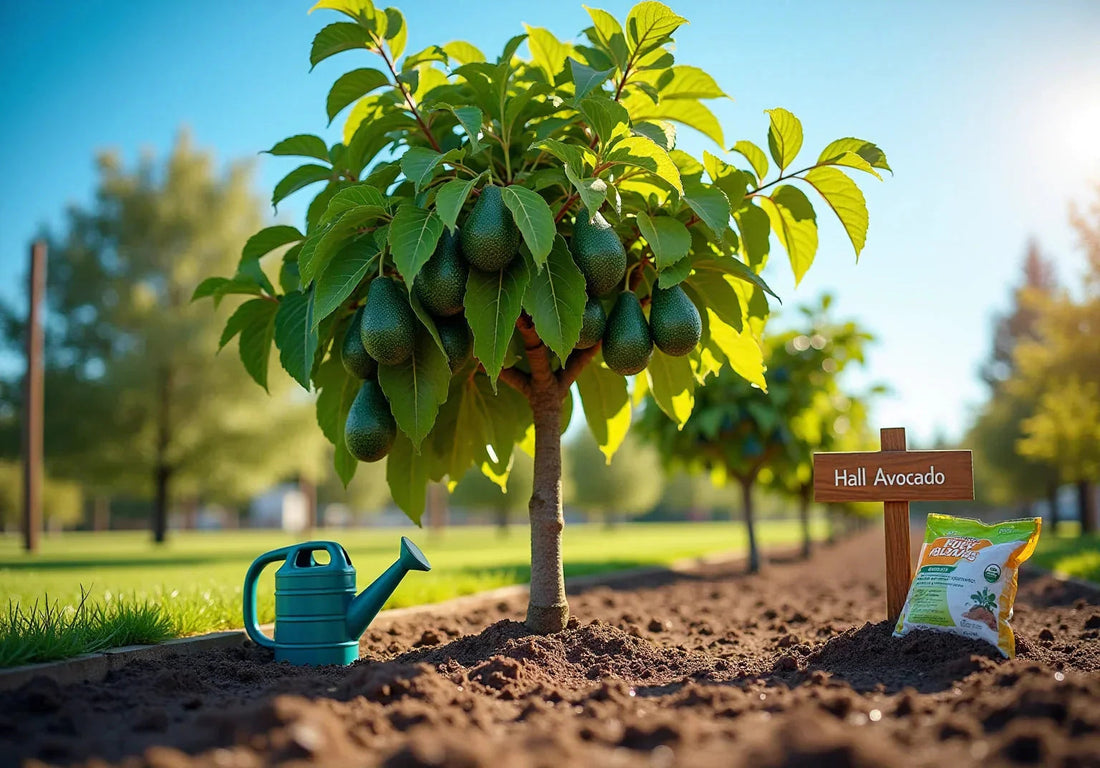
7 Essential Steps for Your Hall Avocado Tree Growth
Share
Planting a Hall avocado tree can be a rewarding endeavor, offering not just delicious fruit but also a beautiful addition to any garden. However, the journey from seedling to fruit-bearing tree requires careful consideration of various factors, including:
- Sunlight and soil conditions
- Pest management
- Pollination needs
This article provides a comprehensive checklist that guides readers through the essential steps for successfully cultivating a Hall avocado tree, ensuring they reap the benefits of their efforts.
What challenges might arise along the way? How can aspiring gardeners navigate these challenges to achieve a thriving avocado harvest?
🥑 Thinking about growing a delicious avocado in your garden?
Shop a Hall Avocado Tree at Everglades Farm shipped directly from Florida.
1. Assess Your Growing Conditions for Hall Avocado Trees
- Check Sunlight Exposure: Ensure the planting area receives at least 6-8 hours of direct sunlight daily, as this is essential for healthy growth and yield. While these plants flourish optimally in full sunlight, they can endure partial sunlight (4-6 hours), though this might result in slower growth and fewer fruits.
- Evaluate Soil Type: Test the soil to confirm it is well-draining, ideally sandy loam, with a pH level between 5.5 and 7. Avoid poor drainage and high salinity regions, as these can adversely affect nutrient availability and root development, crucial for the health of these plants.
- Evaluate Drainage: Ensure the area does not hold water, as these plants are vulnerable to root rot in waterlogged conditions. If drainage is poor, consider planting on a mound to enhance water flow and prevent saturation. Additionally, maintain a grass-free area 2 to 5 feet away from the trunk to promote proper drainage and reduce competition for nutrients.
- Consider Temperature: Verify that your climate can support temperatures between 60°F and 85°F, as a hall avocado tree for sale is moderately cold tolerant down to 20°F. Avocado plants can endure temperatures varying from -4°C to 40°C, and they mature optimally at temperatures of 60° to 75°F.
- Space for Growth: Ensure there is enough space for the plant to grow, ideally 23-30 feet away from structures and other plants. Common planting distances include 7 X 7m (23 X 23 ft.), 10 X 5m (33 X 16.5 ft.), or 6 X 3m (20 X 10 ft.). Proper spacing enables sufficient air circulation and sunlight exposure, which are essential for healthy development of the fruit.

2. Choose a Reputable Source for Your Hall Avocado Tree
- Research Nurseries: Seek out nurseries that specialize in tropical fruit plants, such as Everglades Farm, recognized for its commitment to quality and high customer satisfaction ratings. This ensures that you are sourcing from a reputable provider.
- Inspect the Plant: Choose a hall avocado tree for sale that is between 2 to 4 feet tall and grown in a 3-gallon container. Ensure the plant appears robust and free from any signs of pests or diseases, which is essential for a healthy start in your garden.
- Check Reviews: Explore customer testimonials to evaluate the nursery's reputation and the quality of their fruit-bearing plants. Positive feedback can indicate a trustworthy source, helping you make an informed decision.
- Inquire About Care: Engage with the nursery staff to understand the plant's care history and any specific requirements it may have. This knowledge is crucial for successful growth and longevity of your tropical fruit plants.
- Look for Guarantees: Select nurseries that offer assurances on their hall avocado tree for sale. This ensures that you receive a healthy and viable fruit-bearing plant for your garden, providing peace of mind in your purchase.
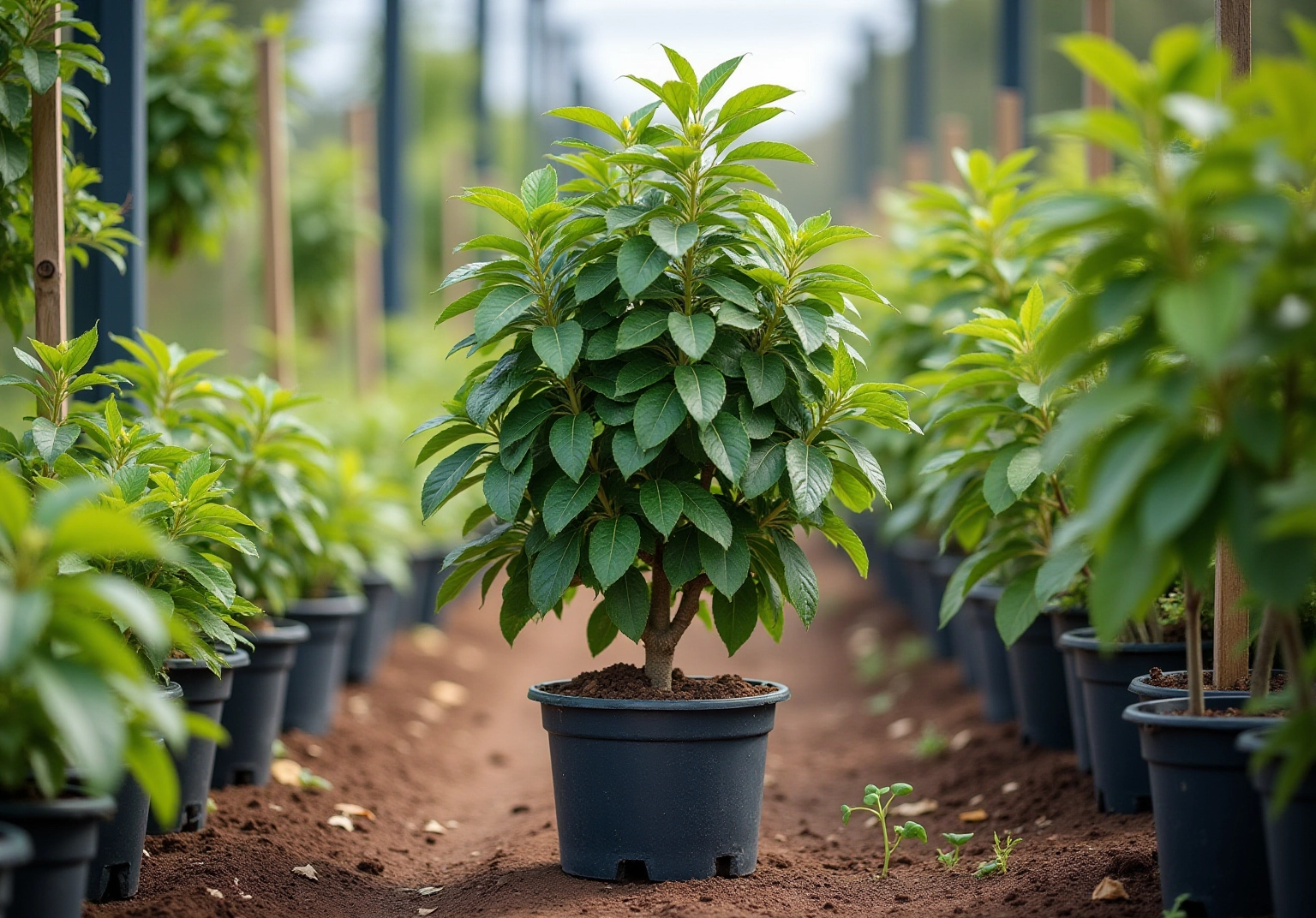
3. Implement Care Strategies for Optimal Growth of Your Hall Avocado Tree
- Watering: To ensure the health of your Hall avocado plant, deeply water it once or twice a week, allowing the soil to dry slightly between waterings to prevent root rot. In summer months, especially in warmer climates, irrigation may be necessary every 7-10 days. Monitoring soil moisture levels with tensiometers is crucial for optimal watering practices.
- Fertilization: During the first year, fertilize your plant every 1-2 months with a balanced fertilizer to support its initial growth. After the first year, reduce fertilization frequency to 3-4 times annually for young plants (0-4 years). For established plants (5+ years), fertilization should occur twice a year. Ensure the plants receive essential nutrients, such as nitrogen for shoot development and potassium for fruit production. Additionally, providing calcium during the first 6-8 weeks of fruit growth enhances fruit quality.
- Pruning: After fruiting, trim your plant to manage its size and shape. Remove any dead or crossing branches to promote better air circulation and light penetration, which are vital for healthy growth.
- Pest Management: Regularly inspect your plant for pests, such as aphids or spider mites. If detected, address the issue promptly with organic insecticides to maintain plant health. Consistent inspections are essential for early detection and effective management of these pests.
- Mulching: Applying a layer of mulch around the base of the plant helps retain moisture, suppress weeds, and regulate soil temperature, all of which are crucial for healthy root development.
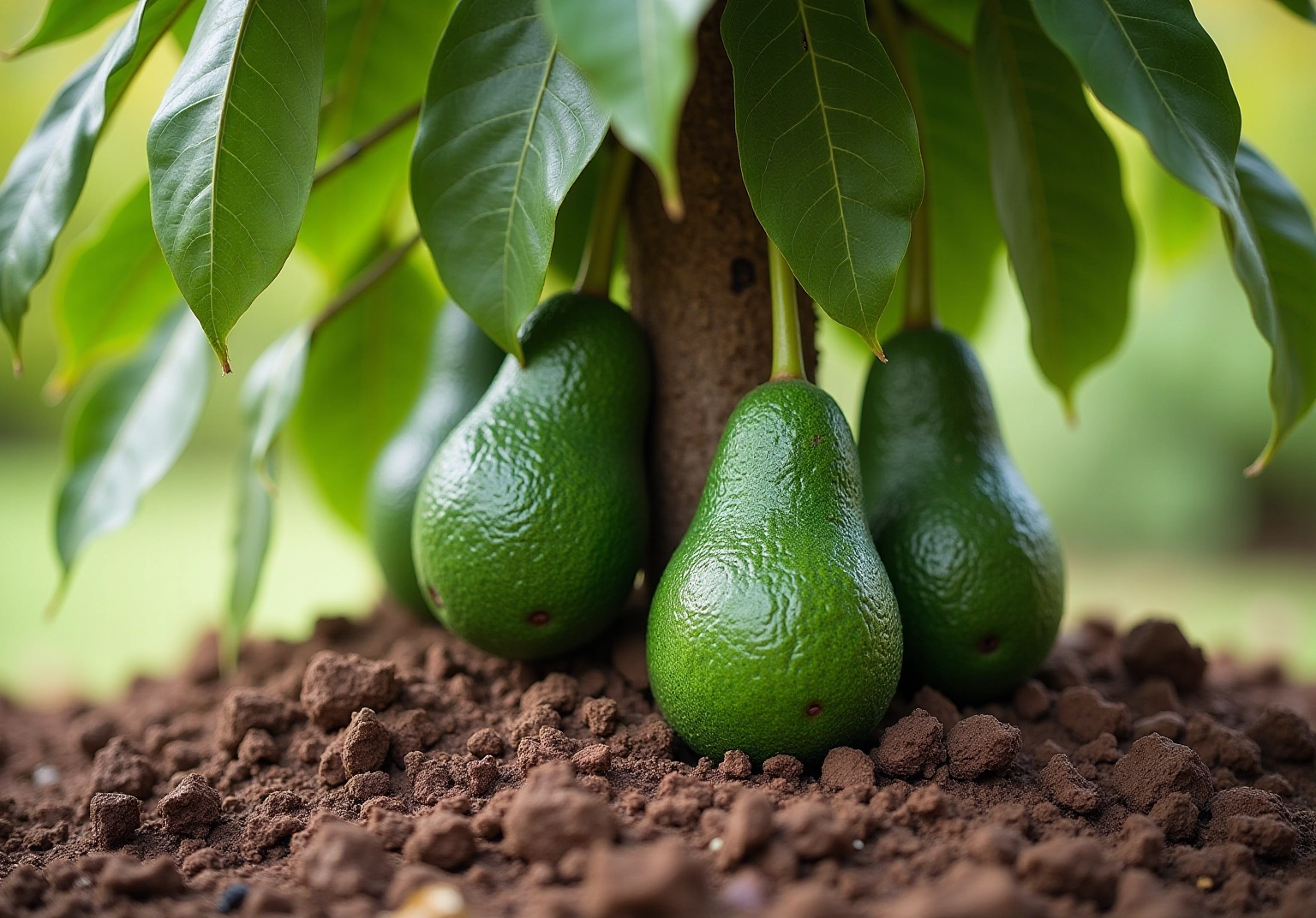
4. Monitor for Pests and Diseases
-
Regular Inspections: Conduct weekly assessments of your Hall fruit-bearing plant, focusing on the leaves and stems for any signs of pests or diseases. Early detection is crucial for effective management. As UCCE Subtropical Horticulture Farm Advisor Sonia Rios emphasizes, "The concept of early detection and rapid response is fundamental to effective invasive species management."
-
Identify Common Pests: Familiarize yourself with common pests such as aphids, scale insects, and spider mites. Look for symptoms like discolored leaves, yellow speckles caused by spider mites, webbing, or sticky residue, which can indicate an infestation.
-
Disease Awareness: When considering a hall avocado tree for sale, stay vigilant for signs of diseases such as root rot and leaf spot. Symptoms may include wilting, yellowing leaves, or dark spots, which can signal underlying health issues. Ensure your avocado plant is placed in well-draining soil and adjust watering schedules to prevent root rot.
-
Use Organic Treatments: When necessary, apply organic pesticides or fungicides, following the manufacturer's guidelines to ensure safe and effective treatment.
-
Maintain Hygiene: Regularly clean up fallen leaves and debris around the plant to minimize the risk of disease and pest attraction. Good hygiene practices are essential for maintaining tree health.
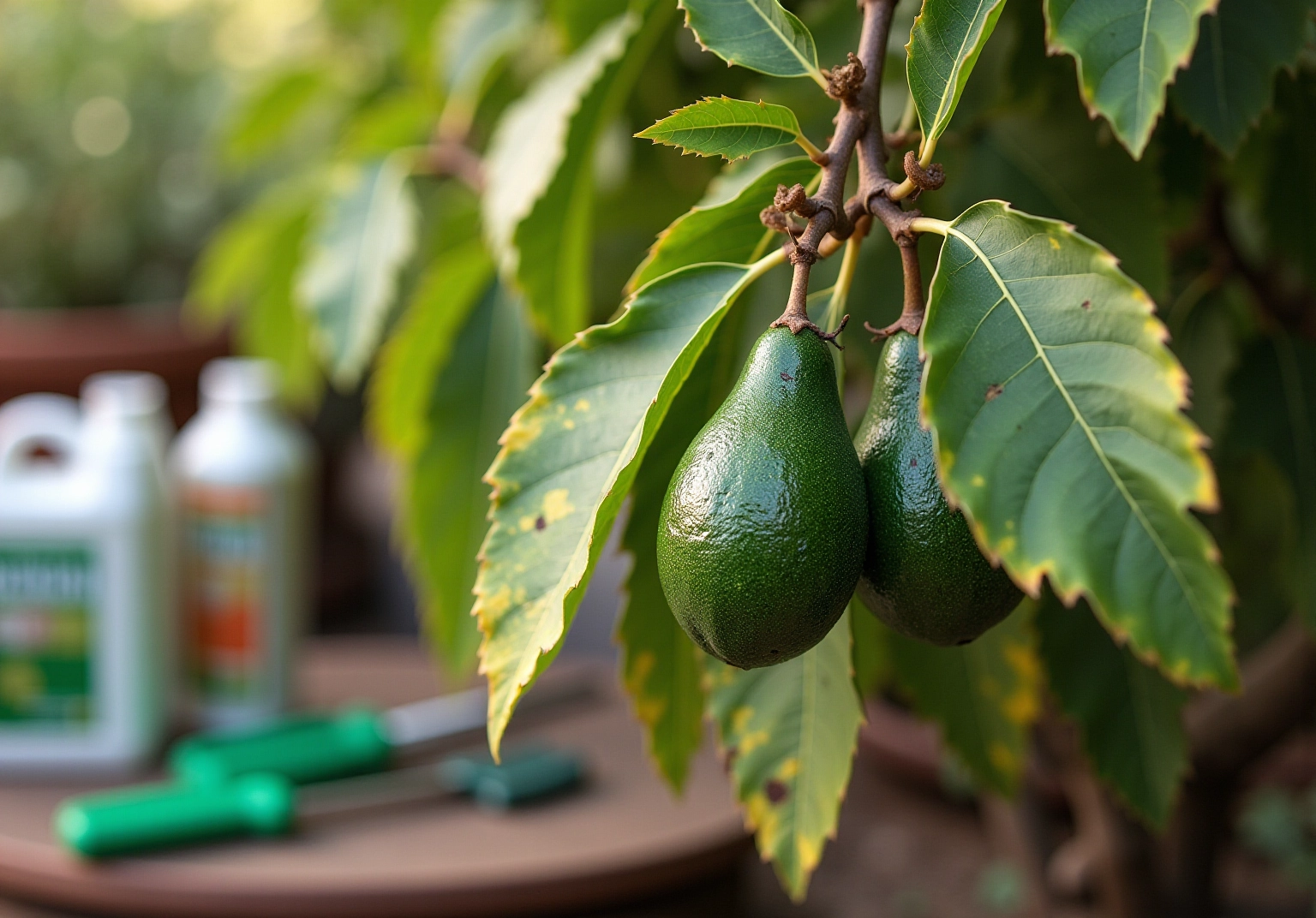
5. Understand Pollination Needs
- Know Your Variety: Hall fruits are classified as Class B, indicating their ability to self-pollinate. However, they significantly benefit from cross-pollination with Category A varieties, which enhances crop set and overall production.
- Consider Planting Companions: If space permits, planting a Category A fruit-bearing plant nearby can greatly improve fruit production. The compatibility between Category A and B plants facilitates efficient pollination, resulting in a more abundant yield.
- Observe Flowering Periods: Understanding the flowering periods of your fruit-bearing plants is crucial. Type A plants typically bloom their flowers in the morning as female and transition to male in the afternoon of the following day, while Type B plants do the opposite. Ensuring these flowering periods overlap will maximize pollination opportunities.
- Encourage Pollinators: Attracting bees and other pollinators to your garden is vital for successful production. Managed honeybees are recognized as the most important pollinators due to their frequency and efficiency. Planting a variety of flowering plants nearby can create a hospitable environment for these beneficial insects, essential for transferring pollen between plants. It is important to note that the abundance of wild pollinators can vary significantly, ranging from 90% to 8% across different locations, underscoring the need to foster a diverse pollinator population.
- Monitor Yield Formation: After the blooming period, closely monitor your hall avocado tree for sale for signs of yield set. Adjust care practices as needed to support the developing fruit, ensuring they receive adequate nutrients and water for optimal growth.
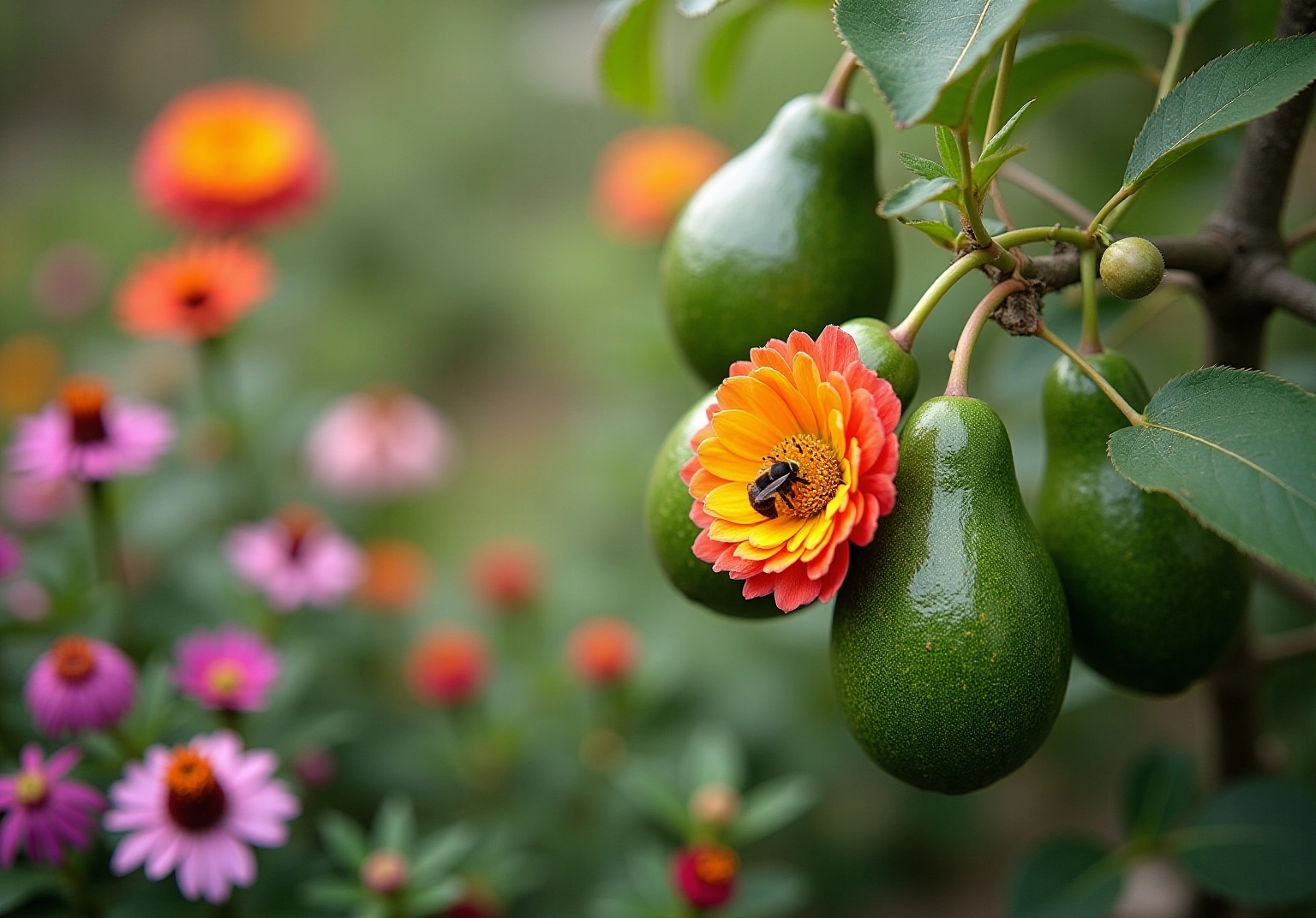
Conclusion
Establishing a thriving Hall avocado tree requires careful attention to various essential steps, encompassing everything from assessing growing conditions to understanding pollination needs. By following the outlined strategies, gardeners can ensure their plants not only survive but flourish, ultimately yielding delicious fruit.
Key arguments presented highlight the importance of:
- Optimal sunlight
- Well-draining soil
- Proper spacing to promote healthy growth
Additionally, sourcing the tree from reputable nurseries, implementing effective care strategies, and monitoring for pests and diseases are crucial for maintaining the tree's health and productivity. Understanding the pollination process further enhances the potential for a bountiful harvest.
Incorporating these practices supports the growth of Hall avocado trees and contributes to a more sustainable gardening experience. By committing to these essential steps, gardeners can take pride in cultivating a resilient plant that will provide enjoyment and nourishment for years to come. Embrace the journey of growing your Hall avocado tree and witness the rewarding results of your efforts.
Cultivate Your Own Hall Avocado Tree Today!
Start your journey with Everglades Farm and enjoy bountiful harvests from your backyard.
👉🏻 Shop Hall Avocado Tree for sale
👉🏻 Explore Avocado Trees Collection
Frequently Asked Questions
What are the ideal sunlight conditions for Hall avocado trees?
Hall avocado trees require at least 6-8 hours of direct sunlight daily for healthy growth and yield. They can tolerate partial sunlight (4-6 hours), but this may lead to slower growth and fewer fruits.
What type of soil is best for growing Hall avocado trees?
The best soil for Hall avocado trees is well-draining sandy loam with a pH level between 5.5 and 7. It's important to avoid areas with poor drainage and high salinity.
How can I ensure proper drainage for Hall avocado trees?
Ensure the planting area does not hold water, as Hall avocado trees are susceptible to root rot. If drainage is poor, consider planting on a mound and maintain a grass-free area 2 to 5 feet away from the trunk to promote drainage and reduce nutrient competition.
What temperature range is suitable for Hall avocado trees?
Hall avocado trees thrive in temperatures between 60°F and 85°F and can tolerate cold down to 20°F. They mature optimally at temperatures of 60°F to 75°F.
How much space should I provide for Hall avocado trees?
Hall avocado trees need ample space to grow, ideally 23-30 feet away from structures and other plants. Common planting distances include 7 X 7m (23 X 23 ft.), 10 X 5m (33 X 16.5 ft.), or 6 X 3m (20 X 10 ft.).
How can I find a reputable source for purchasing a Hall avocado tree?
Look for nurseries that specialize in tropical fruit plants, such as Everglades Farm. Check customer reviews and testimonials to assess the nursery's reputation.
What should I inspect when choosing a Hall avocado tree?
Choose a Hall avocado tree that is between 2 to 4 feet tall and grown in a 3-gallon container. Ensure the plant is robust and free from any pests or diseases.
Why is it important to inquire about the care history of the Hall avocado tree?
Understanding the plant's care history and specific requirements from the nursery staff is crucial for ensuring successful growth and longevity of your Hall avocado tree.
What guarantees should I look for when purchasing a Hall avocado tree?
Select nurseries that offer guarantees on their Hall avocado trees to ensure you receive a healthy and viable fruit-bearing plant, providing peace of mind with your purchase.


